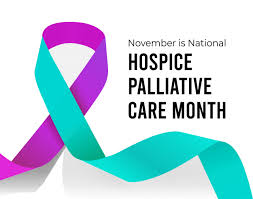When 78-year-old Armand Bennett* contracted a terminal illness, though the prognosis wasn’t good, he and his family opted for treatment. Prolonging his life would be a long shot, and with some risks—though ones they wanted to take. As it turned out, he defied the odds by responding well to treatment. Bennett had been placed in hospice care but when the tide turned in his favor, doctors transitioned him to palliative care as he still needed assistance in caring for himself, among other things.
The Difference Between Hospice Care
and Palliative Care
What is Hospice Care?
Put simply, hospice care is compassionate comfort care (as opposed to curative care) for people facing a terminal illness with a prognosis of six months or less. This is based on the physician’s estimate if the disease runs its course as expected, and in fact must be certified by two physicians.
Hospice care provides help with feeding, bathing, and household tasks and errands if needed, as well as aggressive pain management. It also benefits family members, providing social workers, chaplains and other resources for emotional support and giving overburdened family caregivers an important respite from caregiving tasks.
members, providing social workers, chaplains and other resources for emotional support and giving overburdened family caregivers an important respite from caregiving tasks.
Yet, a prevalent issue among physicians in certifying hospice care is that they may be reluctant to put a timeline on life and death. “They are conservative in their estimate of time,” says 40-year healthcare/hospice care veteran Michael Demoratz, MSW, PhD, of the MemorialCare health system of Los Angeles and Orange Counties. “And they don’t want to take on the burden of having predicted somebody’s death.”
Though patients may not be prepared to hear how much longer they have, the not knowing can be a detriment to patients and families. “No one is telling them anything and they are operating almost in a vacuum,” Demoratz adds.
What is Palliative Care?
Palliative care is a layer of specialized care added to the traditional medical care someone is already getting. It is not a substitute for medical care. Palliative care is instituted to help provide relief from the symptoms, physical and emotional stress, and side effects of a serious or life-limiting illness. Unlike hospice care, there is no end-of-life projection. It is utilized to help reduce suffering and improve the quality of life. At times the patient is anticipated to recover. This kind of care can be pursued at diagnosis, during curative treatment and follow-up, and at the end of life.
The merits of palliative care include helping patients and family caregivers learn to manage anxiety, stress, and depression. Patients can receive palliative care at home, in an assisted living facility, skilled nursing facility, or in a hospital. In home-based programs, when pain and other needs are consistently managed, palliative care can reduce the high costs associated with emergency room visits and acute care at hospital readmission.
Some of the diseases and conditions for which doctors sometimes recommend patients seek palliative care include:
- Alzheimer’s disease
- Amyotrophic lateral sclerosis
- Cancer
- Chronic obstructive pulmonary disease
- Congestive heart failure
- Dementia
- End-stage liver disease
- End-stage renal disease
- Huntington’s disease
- Multiple sclerosis
- Parkinson’s disease
- Stroke
The Shared Benefits of Palliative Care
and Hospice Care
Palliative care shares many benefits with hospice care, among them an interdisciplinary team working with the patient and family. The goal of both is to put in place a network consisting of doctors, nurses, social workers, psychologists, pharmacists, religious or spiritual advisors, financial consultants, nutritionists, and other relevant professionals. The team works with the patient, family, and the treating doctor(s) to develop and administer a program.
The process improves communication between the patient and his/her medical team, and among the entire medical team. Care among all medical team members is coordinated and efforts are made to ensure every member treats the patient according to his or her wishes.
Misconceptions Between Hospice Care
and Palliative Care
Demoratz believes the lines between hospice and palliative care can be blurred. “I think (patients) should often be referred to palliative care at the outset of a diagnosis,” he says. “When they have a symptom burden that is troublesome, such as pain from treatment, that’s usually what stops treatment—the symptom burden becomes too great for the patient and family to handle. The patient says, ‘I can’t do this anymore. I’ll just go on hospice,’” when in fact a palliative care specialist on board ahead of that decision would have been able to address the pain, mitigating the problem, often allowing treatment to continue.
While both hospice and palliative care are designed to provide comfort and necessary levels of care to individuals in different disease states, experts say there can be a misunderstanding about the two entities and in fact a degree of fear involved. No one wants to think about end of life. Just as with Armand Bennett, though, at times patients enter hospice care and come out. Palliative care, in fact, with its comprehensive, multifaceted, ongoing approach to providing a better quality of life, is becoming increasingly associated with helping ensure a longer life.
“If you are comparing them, while palliative care addresses pain management—an important component in quality of life—hospice care is more aggressive about the amount of medication given as it can’t interfere with treatment, which has ended,” Demoratz explains. “At the end of the day, for the family there’s also a whole level of care that comes with hospice that people don’t get when they don’t choose hospice—including 13 months of bereavement support.”
Costs Associated with Hospice Care
and Palliative Care
In general, Medicare, Medicaid, HMOs, and most private insurance companies cover hospice care patients with a prognosis of six months or less. In some cases, doctors may find it difficult to determine if a patient will qualify for hospice care given disease variables and any accompanying conditions and other disease states known as comorbidities.
Though inconsistent in their opinions, some sources say palliative care is covered by private insurance (check with your insurance company) as part of treatment for long-term illnesses. Demoratz points out there is no government-funded program (Medicare; Medicaid) to cover palliative care. “There is no standardization across the country as to what palliative care looks like,” he says. “In that event hospice care, generally covered, is often the only option for people with a high symptom burden.”
There are also nonprofit healthcare organizations, including the MemorialCare health system of Los Angeles and Orange Counties, where he is based, that do cover palliative care, regardless of anyone’s ability to pay for it. “There are a lot of organizations like ours that will cover it, because they know the patient will eventually transition to hospice,” he says.
The Case for Palliative and Hospice Care
The Center to Advance Palliative Care reports the field has shown “stunning” growth over the past 15 years. More than 1,700 U.S. hospitals with 50-plus beds have a palliative care team, with care rapidly expanding into the community. Education about palliative care is among CAPC’s primary missions.
Demoratz says there are better patient and family outcomes in the face of serious illness when either palliative care or hospice care are established. “That said, we do need a more structured benefit (for palliative care),” he says. “Until there’s a reimbursement that comes from the government, I don’t think you’re going to see a large-scale operation for palliative care programs that are similar in nature to one another.”
*Name has been changed for privacy considerations.
“Palliative and Hospice Care Improve Quality of Life,” written by Beth Herman, Amada blog contributor.



